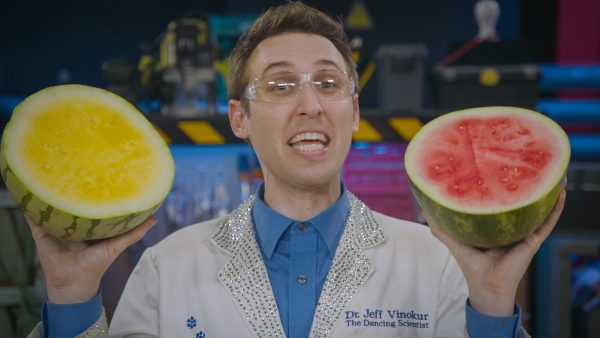Reproduction Definition
Reproduction transfers genetic information from parent(s) to offspring. For example, asexual reproduction produces genetically identical offspring and sexual reproduction produces genetically unique offspring.
View Lesson on Reproduction of Living Things
Become a member to get full access to our entire library of learning videos, reading material, quiz games, simple DIY activities & more.
Become a member to get full access to our entire library of learning videos, quiz games, & more.
Plans & Pricingto watch this full video.

Access All Videos
and Lessons, No Limits.
Access All Videos

No credit card required,
takes 7 sec to signup.
No card required

Ready-to-go lessons
that save you time.
Ready-to-go lessons
If you are on a school computer or network, ask your tech person to whitelist these URLs:
*.wistia.com, fast.wistia.com, fast.wistia.net, embedwistia-a.akamaihd.net
Sometimes a simple refresh solves this issue. If you need further help, contact us.
Reproduction of Living Things
Fun Facts
- Brittle stars can reproduce by dividing in half and growing missing arms.
- Yeast cells reproduce by splitting in half, each with an identical copy of DNA.
- Pollen and egg cells combine in plants for sexual reproduction.
Why Do We Need To Know About Reproduction
Studying how living things reproduce helps us understand why genetics is important. It’s key for keeping species going and pushing medical science forward. Experts in genetics study how traits are passed down and might even fix genetic diseases such as Huntington’s by changing these traits.
Also, jobs like genetic counseling need to understand reproduction to help manage genetic risks in patients and their kids. It is important to stop genetic disorders and keep future generations healthy.
Frequently Asked Questions
Check out the Full Lesson on Reproduction of Living Things
In this lesson, we learn that:
- Reproduction transfers genetic information from parents to their offspring.
- Some organisms reproduce sexually and others reproduce asexually.
- Animals engage in special behaviors to increase their odds of reproduction.
Related Topics
- Bacteria Definition
- Biotechnology Definition
- Chemical Change Definition
- Chloroplast Definition
- Computer Programming Definition
- Conduction Definition
- Definition Of Experiment
- Earth’s Axis Definition
- Electricity Definition
- Erosion Definition
- Extinct Definition
- Freezing Definition
- Fresh Water Definition
- Genetic Factors Definition
- Humidity Definition
- Hydrosphere Definition
- Inclined Plane Definition
- Insulator Definition
- Internal Structures Definition
- Landform Definition
- Lever Definition
- Light Year Definition
- Lunar Eclipse Definition
- Magma Definition
- Metamorphosis Definition
- Motion Definition
- Newton’s 2nd Law Of Motion Definition
- Nucleus Definition
- Offspring Definition
- Opaque Definition
- Organelle Definition
- Pendulum Definition
- Phases Of The Moon Definition
- Plant Growth Definition
- Pollinator Definition
- Problem Definition
- Properties Of Matter Definition
- Rain Definition
- Reproduction Definition
- Respiratory System Definition
- Solar Eclipse Definition
- Sound Definition
- Thermometer Definition
- Tides Definition
- Transform Boundary Definition
- Unbalanced Force Definition
- Water Distribution Definition
- Wedge Definition
Start a Free Trial Today. Get a $5 Amazon Gift Card!
Teachers! Start a free trial & we'll send your gift card within 1 day. Only cards left. Try it now.
Select Grade
Select Subject
This email is associated with a Science Kit subscription. Kit subscriptions are managed on this separate page: Manage Subscription

-
Download InvoiceScience & Math$/yr
-
Download InvoiceScience Only$/yr

access all lessons
• No credit card required •
"My students loved the videos. I started the video subscription in May and used them as a review before the state test, which I know contributed to 100% of my class passing the state test."
Rhonda Fox 4th Grade Teacher, Ocala, Florida
Use Generation Genius in Your School
Access all lessons free for 30 days.
"My students loved the videos. I started the video subscription in May and used them as a review before the state test, which I know contributed to 100% of my class passing the state test."
Rhonda Fox 4th Grade Teacher, Ocala, Florida
• No credit card required •
Already a member? Sign In
* no credit card required *

* no credit card required *
* no credit card required *


to Discover the Benefits of Generation Genius
Learn How to Save for Your School & District!

no credit card required
Skip, I will use a 3 day free trial
Enjoy your free 30 days trial
-
Unlimited access to our full library
of videos & lessons for grades K-5. -
You won’t be billed unless you keep your
account open past your 14-day free trial. -
You can cancel anytime in 1 click on the
manage account page or by emailing us.
-
Unlimited access to our full library of videos & lessons for grades K-5.
-
You won't be billed unless you keep your account open past 14 days.
-
You can cancel anytime in 1-click on the manage account page.
Cancel anytime in 1-click on the manage account page before the trial ends and you won't be charged.
Otherwise you will pay just $10 CAD/month for the service as long as your account is open.
Cancel anytime on the manage account page in 1-click and you won't be charged.
Otherwise you will pay $10 CAD/month for the service as long as your account is open.
We just sent you a confirmation email. Enjoy!
DoneWe use cookies to make your experience with this site better. By using this site you agree to our use of cookies. Click "Decline" to delete and block any non-essential cookies for this site on this specific property, device, and browser. Please read our privacy policy for more information on the cookies we use.Learn More
We use cookies to improve your experience. By using this site, you agree to our use of cookies. Click "Decline" to block non-essential cookies. See our privacy policy for details.Learn More




























































































































